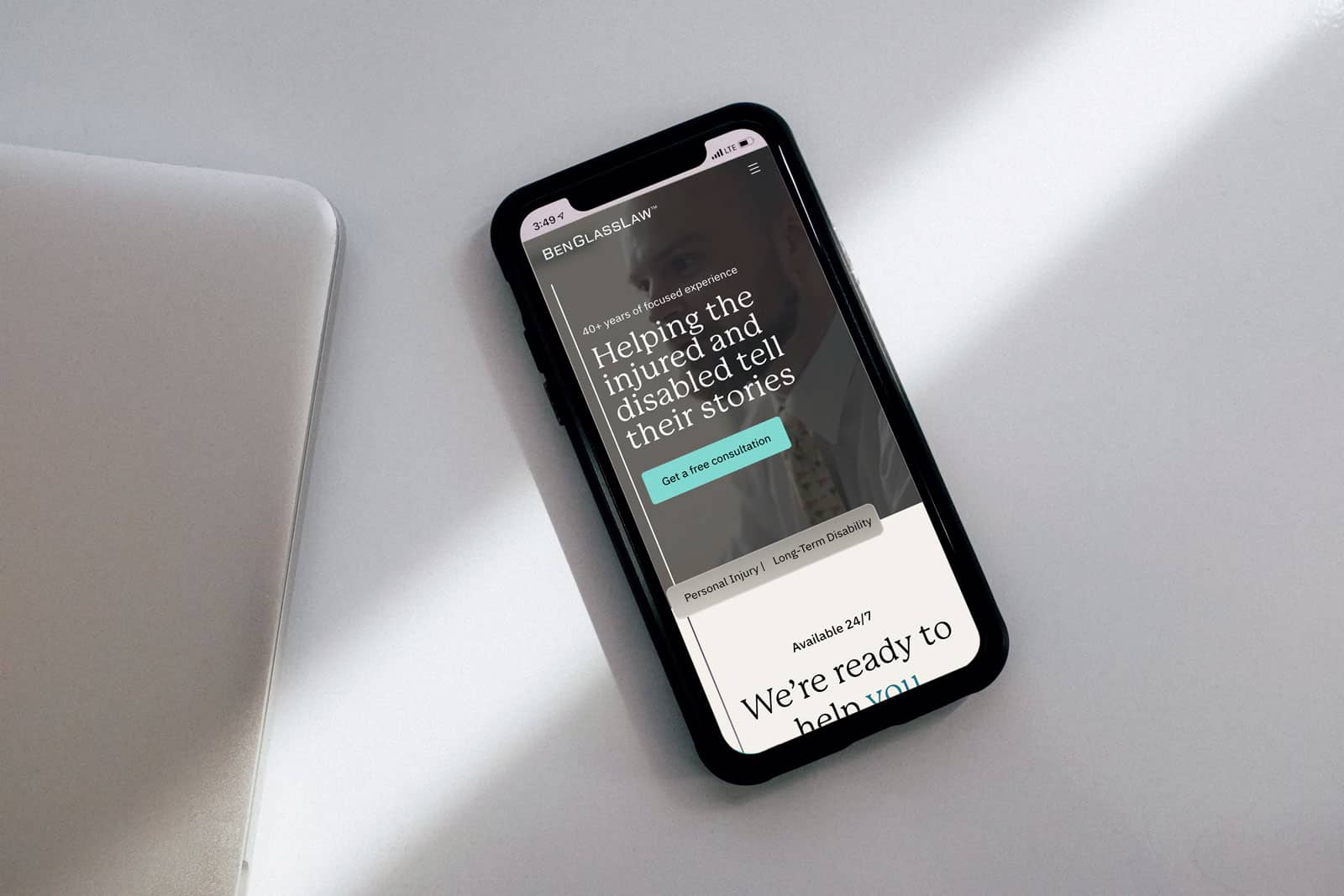Does Your Healthcare Marketing Team Have an Effective Content Marketing Strategy in Place for Open Enrollment?
For healthcare organizations (HMOs, PPOs, independent hospitals, clinics, insurance carriers, etc.), open enrollment is like Thanksgiving, Christmas, and the Super Bowl all rolled into one — except with more planning and less cheer.
Open enrollment is the culmination of all your organization’s efforts, and it will serve as a springboard for the year to come (and potentially years to come). Successfully recruiting and retaining new patients, members, and clients leads to a greater impact in your community, improved talent on your staff, and more revenue. These benefits will help you grow your operations and expand your reach throughout your service area.
Because this brief six-week window is so important, your marketing team must reach as many potential consumers, employers, and brokers as possible. This means consistently developing and optimizing interactive and intuitive content for your website. This content will act as a hub for all your marketing campaigns, including paid, social, email, press and media, blogging, video, and more.
Whether open enrollment is a month away or just passed you by, it’s time to start planning. Keep reading to learn the fundamentals of healthcare content marketing and find out how to create and optimize an effective strategy for open enrollment and the year to come.
Why Is Content Marketing So Important for Healthcare Organizations?
Healthcare consumers want to know and understand more about your organization’s services, thought leadership, and community involvement. Regardless of whether your target audience lives in an urban or rural setting, they likely have plenty of options to choose from, so they need to see what makes your organization stand out from the competition.
Your job is to publish engaging and informative content that provides actionable, in-depth information about how you can help improve your potential consumers’ health and wellness. Modern consumers crave transparency. By providing thoughtful, educational content, you empower them to make informed decisions for themselves and their families.
Smart Healthcare Marketers Embrace Content Marketing Strategies
According to recent research compiled by True North Custom and Healthcare Insight, most healthcare organizations are already investing in content marketing. Based on a survey of 53 healthcare marketing professionals, 83% said they are “engaging in content marketing” and another 14% “plan to start engaging this year.”
However, just 36% of the professionals surveyed said their organization’s content marketing efforts are “very effective.” Perhaps it’s not surprising, then, that only 33% of the respondents said their organization has a documented content marketing strategy. The lack of a well-developed content strategy usually leads to a confusing and disjointed website, poor coordination across campaigns, brand discontinuity, and weak search engine optimization (SEO).
How to Craft Your Content Marketing Strategy Document
A good content marketing strategy document should define optimal organic keywords, set editorial process roles and expectations, emphasize coordinating adjacent campaigns (paid, social, email, etc.). If you execute your strategy correctly, it will result in brand continuity, increased organization awareness, improved SEO, and more engaged digital visitors.
While the prospect of having to create a well-researched, in-depth, customized content marketing strategy terrifies a lot of marketing professionals, it’s actually a lot of fun, and it will make your life much easier in the immediate future and over the long term. To get started, let’s take a closer look at a few key elements and the order in which you should address each one.
1) Define Your Audience
The first thing you and your team need to determine is whom you’re speaking to and how you should be speaking to them. Depending on which type of organization you’re a part of, it’s probably wise to divide your audience into key segments so you can speak directly to the needs of each segment. For instance, HMOs will likely want to target potential and existing members, employer groups, health insurance brokers and brokerages, and even providers within their network.
Here’s a glimpse into our topic focus for healthcare networks, broken down by audience segments:
- Consumers:
- Health education and literacy
- Network and carrier partner awareness and promotion
- Wellness initiatives
- National health weeks and months
- Promoting telehealth features (including portal, mobile apps, etc.)
- Employers:
- Workplace health and wellness
- Creating diverse health benefits packages
- Network and carrier partner awareness and promotion
- Promoting telehealth features
- Brokers:
- Healthcare industry news, trends, and research
- Breaking developments in healthcare-related legislation
- Network and carrier partner awareness and promotion
- Promoting telehealth features
- Providers:
- Best practices for patient communication and network coordination
- Industry insight
- Network and carrier partner awareness and promotion
- Promoting telehealth features
You could also break up your audience base into B2C groups (past, current, and potential consumers) and B2B segments (employer groups, brokers, potential expansion affiliates, and even promotional prospects in the media). Of course, much of the material you create will serve multiple audiences, but it’s best to determine who you’re speaking to before developing any content.
2) Create Personas
We’ve discussed creating personas before, so I won’t go into too much detail here, but a brief overview should point you in the right direction. Personas are fictional representations of your ideal clients based on previous experiences and objective data.
To build personas, you first need to determine the quality and quantity of your previous clients according to their demographics (age, gender, occupation, salary, industry, beliefs, etc.). Then, you craft narratives that describe who those people are and how they fit into your business model. Drafting personas forces you to learn more about your target audience and understand their motivations, and the result will guide your voice, tone, and overall direction throughout the editorial process.
3) Audit Your Existing Website Content
Even if your healthcare organization has already invested in content, it’s important to audit that content and ask yourself whether the material fits into your larger marketing strategies.
A good content audit consists of a thorough review of every piece of material you’ve created on your website, social media properties, digital ads, and other platforms. If you’ve created a piece of content (even if that content never saw the light of day), you should collect it into an organized spreadsheet and begin cataloging each piece. Is it a blog or an infographic? Who was the intended audience? Is it still relevant? If not, should it be updated or taken out of circulation? What’s your ratio of sales to tangential content? What about evergreen versus timely content?
Develop a taxonomy that helps everyone easily identify which content belongs where, which content needs to be updated, and which content needs to be taken down. Once everything is organized, you can begin brainstorming ways to make the best use of each piece of content. Maybe a particularly good blog article could become a longer whitepaper. Maybe you could begin promoting your podcast on your social media channels. Whatever you decide, remember that all approved and useful material could have multiple purposes. Identify which pieces fit in which channels, then work to translate existing content into multi-purpose content for the future.
4) Ideate New Content Topics
Brainstorming is one of the most enjoyable aspects of developing a content marketing strategy for healthcare organizations. We usually democratize the process by inviting everyone on the team to contribute their ideas for interesting and informative topics. Since most professionals have some sort of health coverage and everyone has occasional health concerns and wellness aspirations, we find that our entire staff has something to contribute.
As you ideate, make sure everyone understands your target audience segments and has taken the time to review your personas. Share your keyword research with everyone and use those documents to get people thinking about related topics. Encourage them to conduct their own online research and use Google trends when considering potential titles. Piggyback off previous topics that performed well by creating updated material, taking a different perspective, or placing the existing material in the context of another audience segment.
Most healthcare organizations will (and should) place a heavy emphasis on blogging, but don’t forget other valuable forms of content, such as whitepapers, infographics, videos, radio scripts, case studies, podcasts, digital advertising, and social media posts. Many of the topics you develop will apply to multiple channels, which is always a good thing. So, don’t be afraid to think about how a case study could supplement a landing page which itself might supplement a paid ad!
At the same time, don’t get too far ahead of yourself. Many of your suggested topics will be evergreen in nature, but you should save some room for timely topics as well. The healthcare industry evolves rapidly, so you’ll want to make sure your content developers are staying on top of emerging news and trends. Ideate enough topics for the first six months of your campaign to avoid planning material that may become irrelevant over time. With a healthy list of topics, you can then schedule your next brainstorm session two or three months in advance of the following quarter.
5) Develop an Editorial Calendar
After you’ve sifted through your topics and chosen the most promising, it’s time to create an editorial calendar. In general, you should be creating new blogs for each audience segment each week. You should also publish whitepapers, infographics, and videos on at least a quarterly basis to support new digital marketing campaigns. However, make sure to allow plenty of time for completion: these “big ticket” items can be extremely time-consuming. (Don’t worry too much about the time investment as long as you end up with a strong finished product. Quality resources yield quality returns.)
Email campaigns will also support other campaigns, but you should create emails based on anticipated need. For instance, if you know your healthcare organization is going to expand in the next six months, plan a dedicated email campaign around the expansion. Be sure to support the email campaign with blogs, landing pages, and video at a minimum.
Or, if you’re going to host an informative webinar or speaking engagement, make sure you plot your course carefully. Develop a content outline and then use that document to plan email sends, landing page creation, paid search campaigns, and follow-up surveys.
RELATED BLOG ARTICLE: Email Lists: Low-Hanging Fruit or Cream of the Crop?
At a minimum, your editorial calendar should consist of titles, copy descriptions, and due dates. But going the extra mile could mean the difference between a piece of content going viral or going nowhere. Here are the row headers we use when creating our healthcare clients’ editorial calendars:
- Content type
- Monthly deliverable number
- Draft due date
- Final post date
- Topic/working title
- Author
- Copy description
- Sources
- Other notes
- Feedback
The great thing about a well-developed editorial calendar is that it serves two purposes. Your calendar provides an organizational understanding of upcoming content deliverables and a clear path to success, but it also allows you to review items from previous quarters to gauge your performance.
At LaFleur, we’ve created a simple color key to ensure that we account for each step of the content development process, from initial topic approval to promoting the final version on social media and other channels. This way, we can quickly look over our work, and the colors tell us if the project was approved and created, if there were any delays in the process, and even if we decided to scrap the topic or place it on hold.
6) Define Your Editorial Process
Creating — and adhering to — a strict editorial process is the culmination of your previous efforts and helps establish accountability at every step as you create new pieces of content.
The goal of any editorial process is to implement oversight and quality assurance measures to eliminate the possibility of an inferior piece of content going live. Key touchpoints along the way should empower stakeholders to make direct edits, provide constructive criticism and insightful feedback, and even terminate the project entirely if things aren’t running the way they should or if unforeseen complications have arisen.
Here’s a brief overview of how our editorial process works:
- Research and Ideation
- Content team members research and develop ideas, write topic summaries, and schedule topics in the editorial calendar. Account managers send topics to stakeholders for approval or revision.
- Project Management
- All approved topics get put into our project management tool and broken down into tasks. This allows each task to have one assignee while other key team members follow any updates throughout the editorial process.
- Drafting
- Initial writing takes place, including research, drafting, and attention to SEO best practices.
- Internal Edits
- An editor checks each piece for clarity, accuracy, structure, mechanics, grammar, client preferences, and search engine optimization. We also utilize Grammarly and other tools to do a final check on each piece.
- Client Review
- We invite our healthcare client to log in to Asana to review the piece (which is securely housed in the cloud and accessible only to those with explicit permissions). Stakeholders review the piece for accuracy, relevance, and any other important features. If they need to make edits, they can do so directly in the document.
- Implement Client Edits
- Our expert editors review the client’s changes and, if needed, talk with the client to clarify their feedback. We also document any feedback so clients don’t have to repeat themselves or fix the same issues over and over again.
- Posting Online
- Each piece of content gets posted through the client’s content management system (CMS). When the piece goes live, the client receives a notification.
- Promote Content
- We disseminate content through social media and other channels. Occasionally, we allocate a modest budget to boost these promotions. (We always separate B2B and B2C healthcare social media platforms to ensure the right audience receives the right material.)
- Randomized Quality Assurance Checks
- We assign dedicated staff members who are completely uninvolved in the above steps to audit tasks chosen at random. These QA specialists work with team members to address any quality issues, improve skills and knowledge across teams, and ensure that the absolute best possible material gets delivered to our clients.
Our editorial process might seem complicated at first, but it sets us apart from other marketing agencies. We write truly outstanding content and invite all our clients to take an active role in the process from start to finish. And with so much oversight, we minimize the potential for error and craft material that we know your current and potential consumers, employers, brokers, and providers will love, regardless of which type of organization you belong to.
LEARN MORE: Our Editorial Process for Creating Truly Outstanding Website Content
LaFleur Has the Knowledge and Experience You Need to Market Your Healthcare Organization Successfully
Originally, the team at LaFleur focused on digital marketing for lawyers and law firms. Over the years, healthcare organizations have been referred to us for their marketing needs, and we have become experts in digital marketing for the healthcare industry.
We have an entire team dedicated to healthcare marketing, including skilled writers and editors, experienced paid advertising professionals, social media specialists, project management experts, email automation technicians, and more. In short, we have everything you need to take your healthcare marketing efforts to the next level.
If you’re interested in learning more about how LaFleur can improve your healthcare marketing campaigns and help you appeal to consumers, employers, brokers, and providers alike, please contact us by completing this brief form or calling (888) 222-1512.
Open enrollment is just around the corner, but it’s never too late to make adjustments that could impact your healthcare organization’s future success. Reach out today!
References
McGill, J. (2018, September 4). How to develop a content strategy: A start-to-finish guide. Hubspot. Retrieved from https://blog.hubspot.com/marketing/content-marketing-plan
Nanji, A. (2018, April 19). The state of healthcare content marketing. MarketingProfs. Retrieved from https://www.marketingprofs.com/charts/2018/33916/the-state-of-healthcare-content-marketing
Norris, L. (2018, August 27). Open enrollment for 2019 individual insurance: What you need to know. Verywell Health. Retrieved from https://www.verywellhealth.com/open-enrollment-what-you-need-to-know-4151126




